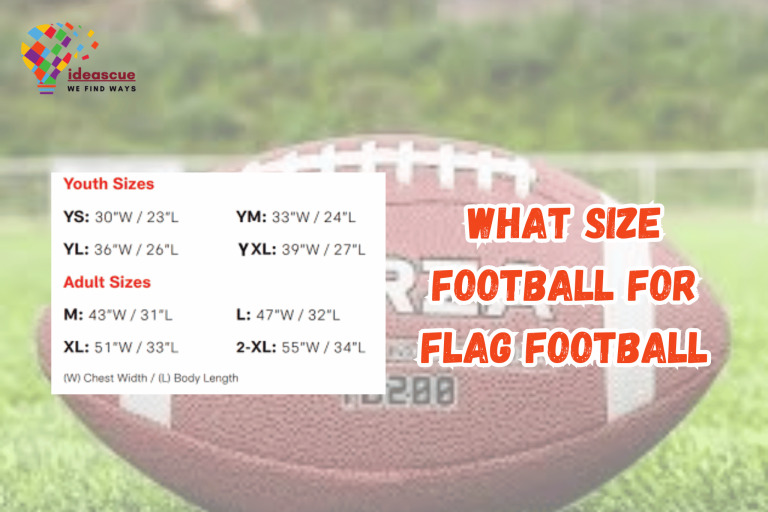What is Agility and Speed in Football?
Introduction:
Football is a game where every second counts and agility makes those seconds matter. This is why understanding why is agility important in football is crucial for players and enthusiasts alike. Agility shapes how players react, move, and succeed on the field.
In exploring why is agility important in football, we see its impact on every kick, turn, and sprint. It’s the key to outperforming opponents and making impactful plays. This guide dives into the world of football agility, unveiling its critical role in shaping the game we love.

Agility in football pertains to a player’s capacity to move swiftly and change direction with agility. Coupled with speed, it’s about rapid acceleration and deceleration, along with swift directional shifts. These attributes are vital in football, as they enable players to outmaneuver opponents, create space, and adapt to the ever-changing dynamics of the game.
Why is Agility Important in Football?
Agility is crucial in football as it enables players to move swiftly, alter their direction, and react promptly. This skill is essential in outsmarting opponents and adapting to the fast-paced nature of the game. Understanding why agility is important in football is key to appreciating the sport’s dynamics and the athlete’s skills.
In football, every swift turn and sudden stop hinges on agility. It’s what makes players stand out, transforming their gameplay into an art. That’s why is agility important in football; it’s the foundation of a player’s ability to perform at their best under any circumstance.
Quick Turns & Changing Directions:
The ability to make quick turns and change directions is essential in football. It keeps opponents guessing and allows players to navigate through tight defenses. This agility aspect is crucial in creating scoring opportunities and maintaining possession, making it a key skill for offensive players.
Stop & Start Movements:
Stop-and-start movements are integral in football. Agility enables players to quickly halt and sprint, crucial in responding to the game’s unpredictable nature. This skill is vital for both offensive and defensive maneuvers, helping players to keep up with the pace of the game and react instantaneously to unfolding situations.
Markings:
In defensive play, agility aids in effective markings. It allows defenders to closely track and mirror the movements of attacking players. This agility aspect is critical in preventing opponents from finding space and opportunities to score, thereby strengthening the team’s defensive strategy.
Goalkeeping:
For goalkeepers, agility is about swift dives and rapid reactions to shots on goal. They can anticipate and respond to threats, ensuring they’re always a step ahead. Agility in goalkeeping is not just physical but also about mental alertness, crucial for making split-second decisions.
Agility in Different Roles:
Football Agility in Defending:
Agility in defending is about more than just keeping up with attackers. It also involves the skill to read and understand the game, anticipate moves, and disrupt offensive plays. Agile defenders can adapt to various scenarios, making them invaluable in maintaining the team’s defensive integrity.
Football Agility in Attacking:
In attacking, agility allows players to break through defenses with unexpected moves. It’s about using speed and quick direction changes to create scoring opportunities. Agile attackers are unpredictable, making it difficult for defenders to anticipate and counter their moves.
How do Footballers Work to Gain Agility?
Footballers gain agility through a combination of training drills, strength and conditioning exercises, and practice games. These activities are designed to improve reaction time, coordination, and the ability to quickly change direction, all of which contribute to a player’s overall agility.
Here are the world’s current top six agile football players:
- Neymar Jr.
- Lionel Messi
- Kylian Mbappe
- Cristiano Ronaldo
- Bernando Silva
- Ousmane Dembele
Top Agility Workouts for Football Players:
Practicing top agility workouts is essential for football players and in all forms of sports activities in general. These exercises, such as ladder drills and shuttle runs, enhance quickness and reaction time, crucial for outperforming on the field. They help players master the art of swift movements and rapid direction changes.
These workouts not only answer the question of why is agility important in football but also provide practical ways to improve it. Regular practice of these agility drills ensures players can maneuver effectively during games, showcasing their speed and strategic thinking in every move they make.
Workouts for Goalkeepers:
Goalkeepers have specialized agility drills, such as quick foot movements around a set of cones, dive and recovery exercises, and reaction ball training. These drills improve their ability to move swiftly across the goal, enhance dive techniques, and boost reaction times to shots.
FAQs
Conclusion:
In summing up why is agility important in football, it’s clear that it stands at the heart of every powerful play and strategic move on the pitch. Agility isn’t just about physical prowess; it’s a blend of mental sharpness and tactical understanding that distinguishes great players.
So, the next time you observe a match or step onto the field, remember the pivotal role of agility. It’s the essence of why is agility important in football, transforming good players into exceptional ones, and turning games into unforgettable experiences.






